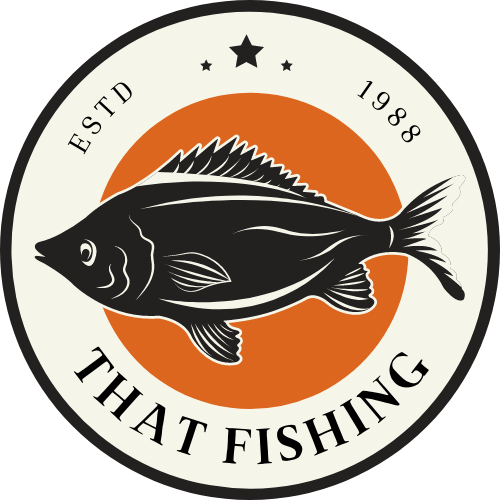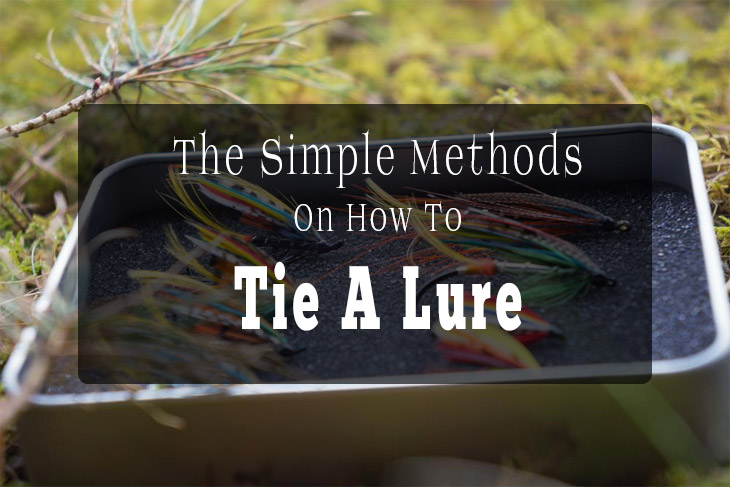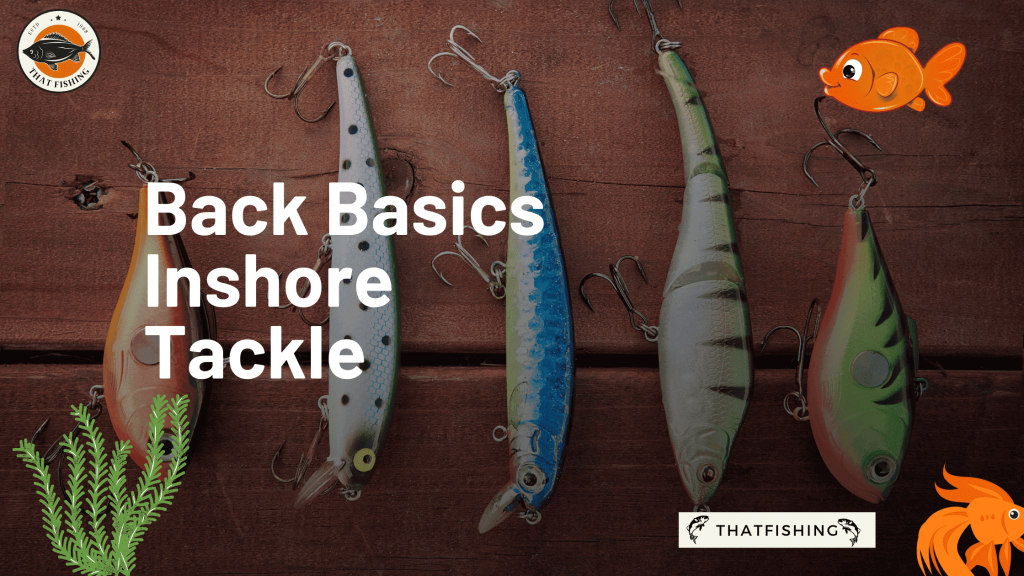Learning how to tie a lure is essential to your fishing success. If you fasten your fishing lures correctly, they can more likely entice fishes which can lead to a high fishing rate.
If the way you attach your lures on your fishing line is not right or if you do not know how to tie them on your leader line, you may lose them while you are fishing. Thus, even if you purchase the most expensive and fancy lures on the market, they may just be worthless.
Like tying your hook on your fishing line, tying a lure will be a matter of a few seconds, and it is just so simple to master once you continue reading this article. Before I discuss with you the different methods, let me first enumerate the fishing gears and tackles that you must have for this tutorial.
Materials To Tie A Lure
We have mentioned below all materials in detail that you would need for tie a lure:
1. Lure
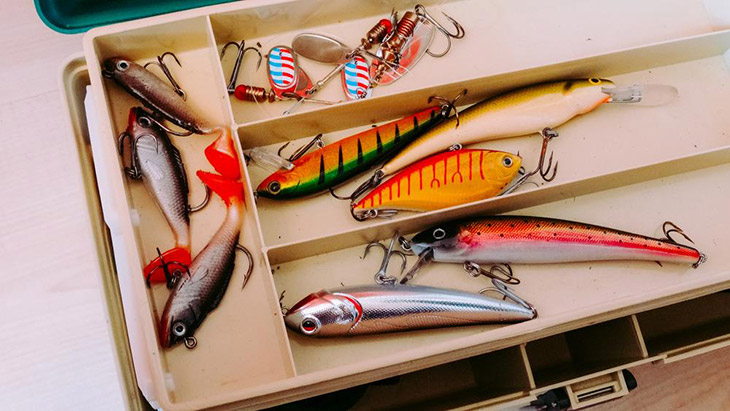
This piece of equipment is the single most important stuff that you will need for this tutorial, and you may already have one (or more) stored in your tackle box. The best thing to bear in mind is to choose one that meets your needs and preferences. In my case, I typically use products of Rapala, specifically Rapala X-Rap XR10 and the Rapala Original Floating Minnow.
Some alternatives I find useful are Acme Little Cleo and Curly Tail Grub. Lures also come in a wide variety of size options, so select one based on your target. Always choose a lure also that can mimic the real actions of a real fish underwater, so it can easily entice fish.
2. Fishing line
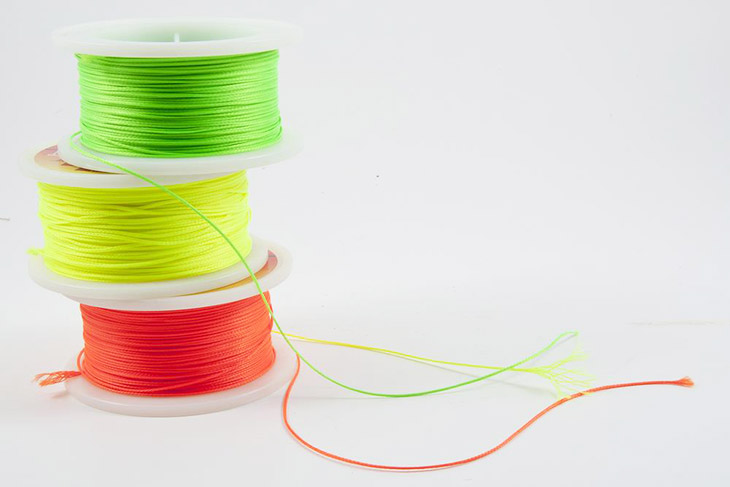
This fishing tool is the device that you will use to tie your fishing lure. The types of fishing lines that you can utilize for this tutorial are monofilament, braided, and fluorocarbon fishing leaders. I recommend that you pick braided or fluorocarbon fishing lines when you are using a lure to catch fish.
I always use braided and fluorocarbon fishing lines. Seaguar Blue Label Fluorocarbon Leader is what I always use because it has little memory. Braids are also good fishing lines as they have well-built fibers; however, line-shy aquatic animals may easily see them because they are opaque.
On the other hand, monofilaments are good lines as well because they are translucent, which makes them not visible to fish. However, I am not always using them as they are quite stretchy.
3. Scissors
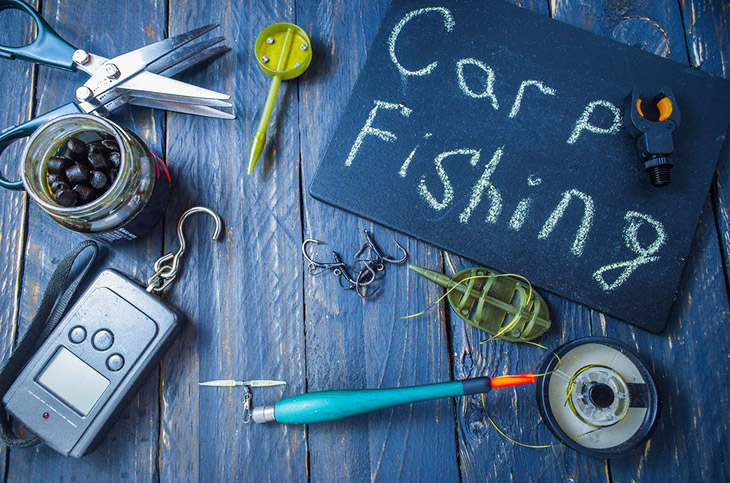
You will utilize this equipment once you need to cut the extra line when you tie your lure. You can use any scissors for this tutorial for as long as you can cut the excess line when you tie your fishing lure.
scissors-fishing
Some anglers also use other cutting materials as an alternative, such as pliers. You can even use nail cutters.
Any cutting tool might be dangerous, so you have to be careful in using this tool if you are a kid. You can ask for assistance from your parent or guardian when using this cutting tool.
The Different Methods of Tying Lure
While several tutorials on how to tie fishing swivels and hooks, how to tie braid to mono, and how to attach a hook to a fishing line involve the use of knots, the ones I use for tying my lures are pretty different.
In this tutorial, I have come up with the five basic styles or methods which I use and which I find effective in fastening my line to my lure.
Method 1: Rapala Knot
This way of tying the knot creates a non-slip loop at the line’s end which is helpful in enticing fish because it gives more action to your lure. This style is also useful when you are attaching a monofilament to your lure.
1: Make an overhand knot and let the tag end pass through the attachment eye of your fishing lure.
2: Around the standing line, make three turns before you tie it back through the overhand know, which you formed earlier.
3: Let the tag end pass through the loop which you have created.
4: Lastly, moisten your line, and pull the standing line on while you are holding the tagline so that you can close the knot. Then pull on the standing line as well as the tag end for you to tighten down your knot.
To better understand how this method works, please see the video below.
Method 2: Clinch Knot
This method is another effective style that will prevent you from losing your lure.
1: Thread your tag’s end through the eye of your fishing lure before you pass it through, and make sure that you have at least three to four inches of the line which is enough amount to work with in tying your knot.
2: Wrap the line that you have at least five times around the line that will enter the eye. Wrap it systematically, and make sure that all the loops that you form are tight enough and that they do not overlap.
3: Guide the line’s end through the loop which is nearest to the lure’s eye, then push the line through and allow it to pass back through the bigger loop that this action creates.
4: Make sure that you pull your line tight enough while you are running down the five loops that you formed with your other hand toward the fishing lure’s eye. After pulling the knot, trim the excess line using a pair of nail cutters.
The video below will give you a clearer picture of how to do this style of tying your lure.
Method 3: Perfection Loop
This style seems to be hard to do at first, but it only takes some practice to master it. Alternatively, you can also learn how to tie a dropper loop which is also useful in creating multiple hook bait rings on a fishing line.
1: Pass the tag end at the back of your standing line so that you can form a loop at the line’s end then add the lure by inserting the end of your line to the lure’s eye.
2: Wrap your standing line, so you can form another loop, then hold it in place before you make one more twist around your line, which is now crossing the topside of your new loop.
3: Make sure to hold your tag end in place and let your second loop pass through the first.
4: Pull in both directions to tighten the knot.
5: Cut excess line close if there is any.
The audio-visual presentation I have included below better illustrates how you make the perfect loop.
Method 4: Palomar Knot
This method is one of the easiest known ways to fasten your lure.
1: Fold around six inches of your main line to double it, and let it run through the eye of the lure.
2: Make an overhand knot, then tie it around your folded line and allow your lure to hang from the bottom.
3: Pull the loop’s end down, and let it pass completely through the lure.
4: Make sure to moisten it enough. Pull in both directions so that you can draw up your knot.
5: Cut excess lines close.
Kindly check the video below to see the demonstration of the steps I just mentioned.
Method 5: Trilene Knot
This style is almost similar to Improved Clinch; however, it is stronger. It is a good way to connect lures to monofilament and fluorocarbon fishing lines as well. It is also known as the Two-Turn Clinch Knot.
1: Let the tag end of your line enter the lure’s eye twice to ensure that you form a double loop at the eye of your lure.
2: Make four or five turns to wrap your tag end around your standing line which should cause it to move away from your lure.
3: Allow your tag end to pass back through the double loop at the lure of your eye.
4: Moisten, and make sure to pull the knot tight enough against the lure’s eye.
5: Trim excess tag.
Related Reads:
Wrapping Up! How To Tie A Lure
You can now fish with your lures along with your fishing knots and rigs. I hope that you can achieve a higher fishing rate using your fishing lures now that you know the different methods of connecting your lure to your fishing. In my case, I was able to attract and seize more aquatic animals when I learned how to tie my artificial baits.
The methods are just simple, aren’t they? That’s all that you should learn for this tutorial. I suggest that you practice the steps of the methods that I have discussed if you think that you might forget these things when you go fishing.
If you think that you have learned from this writing piece about how to tie a lure, please don’t hesitate to share this tutorial with your friends. You can also leave your insights in the comment section below if you have other methods that you know that I did not mention in this article.
FAQs
The best knot for tying a lure is the palomar knot as it is far the most popular and smooth to apply knot. It gives high quality strength and works properly with maximum lures.
Clinch knot is the easiest and most powerful knot to tie a lure. This knot may be used with a braided fishing line and mono-filament.
In many cases, swivel isn’t always important while tying a lure. However it prevents line twists at the same time as the use of positive kinds of lures.
